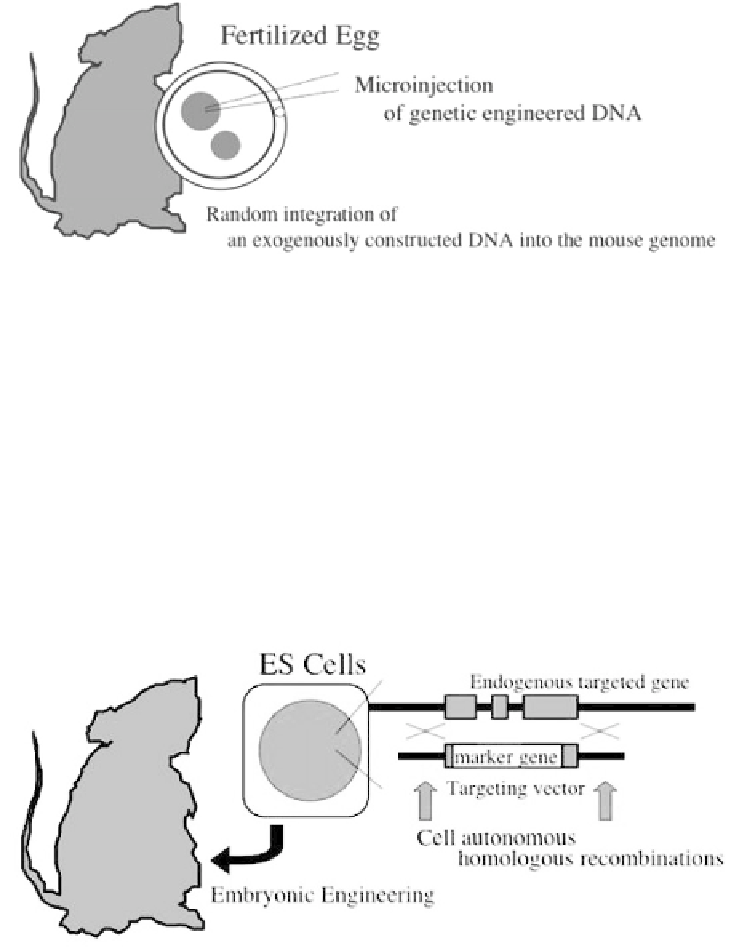Information Technology Reference
In-Depth Information
Fig. 2.
System of transgenic mouse. An
in vitro
constructed DNA fragment is injected directly
into the pronucleus of a fertilized egg. Occasionally the injected DNA is occasionally inte-
grated into the genomic DNA of the fertilized egg. Once integrated, it is delivered to all the
cells as if it were a part of the authentic endogenous genome. The integrated DNA sequence is
usually inherited stably to the offspring. If any phenotypic changes are observed in the trans-
genic mouse, it is primarily expected to be a gain of function.
10.2.1.2 Knockout Mouse (Gene Targeting)
The gene targeting method enabled the disruption of any part of genomic sequences
with a marker gene in the mouse genome in a site-specific manner (Fig. 3), and the
study of the functional loss of the endogenous genomic sequence. Occasionally the
disruption might be lethal, thereby hampering the elucidation of the normal function
of the sequence.
Fig. 3.
Knockout mouse system by gene targeting. Homologous recombination occurs even in
somatic cells with a low frequency. A targeting vector is constructed with part of the genomic
sequences from the gene of the interest and a marker gene: e.g., the neomycin-resistant gene.
The targeting vector is introduced into ES cells by electroporation. Homologous recombina-
tion gives rise to the disruption of the targeted gene by the marker gene. The embryonic
engineering allows the ES cells to become mice.

